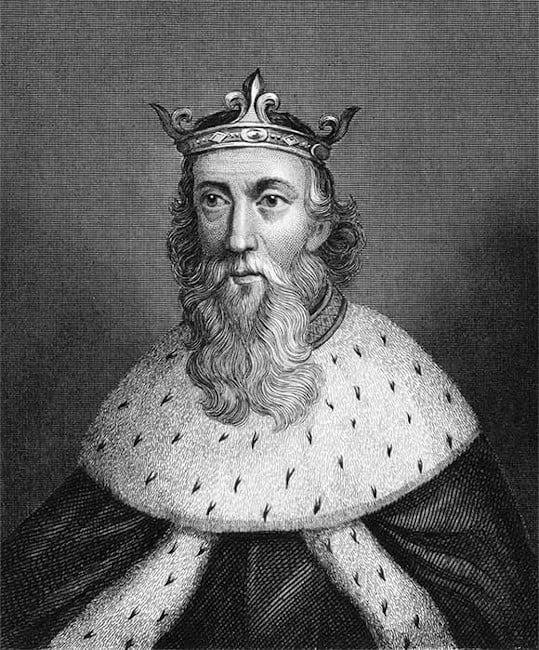
The Anarchy: The Darkest Days of Medieval England
On a calm, clear night towards the end of November 1120, the White Ship set sail from Barfleur in Normandy, bound for England. Crowding aboard the little vessel, a riotous party of some three hundred passengers and crew were all royally drunk – literally so, since the three great barrels of wine they had consumed had been destined for the court of the English king, Henry I. It was his son, the seventeen-year-old William Adelin, chief among the passengers, who had ordered the wine to be distributed, but this generous gesture would cost him his life. For as the ship flew speedily but erratically among the treacherous rocks lining the coast off Barfleur, the inevitable happened. Driven hard onto a rock and holed below the waterline, the White ship sank, and William, his fellow passengers and crew, were drowned in the icy seas.
For Henry I this was not just a personal tragedy. The youngest of three brothers, he, himself, had come to the English throne in controversial circumstances, later defeating his older brother Robert and claiming his dukedom of Normandy as well. He had clearly planned a smoother passage for his heir, for William Adelin, his sole legitimate son, had been trained from childhood for his future role, and already acclaimed by the nobles of England and Normandy as Henry’s successor. Even so, there had been challenges to Henry’s rule, not the least from Robert’s son, William Clito, who along with his supporter, King Louis of France, had recently been defeated in battle. Henry was determined Clito would never succeed him either in England or in Normandy, but where now was he to find an heir for his lands?
- Sex and the Roman Empire: Scandalous Literature about Empresses Euphemia and Theodora
- King Henry I’s Illegitimate Daughters, Pawns In A Dynastic Strategy
Henry already had more than half a dozen sons among his many illegitimate children – indeed, one was drowned alongside William on the White Ship – but there is no suggestion he ever considered naming one of these as his heir. A widower in his fifties, he quickly remarried, and when his eldest illegitimate son, Robert, was soon after made Earl of Gloucester, his role was clearly to be that of protector and support to any legitimate son that might now be born. There would, though, be no child born from this union.
Besides William Clito, Henry had several other nephews. His favorite sister, Adela of Blois, had four sons, two of whom, William and Theobald, were already settled in life, the latter becoming Count of Blois on his father’s death. The younger two, Stephen and Henry, had before now received substantial support from the king, Stephen in particular being given large estates in England, and each would be further provided for. Henry, a monk, became Abbot of Glastonbury in 1126, and a few years later would be appointed Bishop of Winchester. Before then Stephen would marry Matilda, heiress to the county of Boulogne, and soon after become co-ruler of that county. Again, though, there is no evidence Henry saw any of Adela’s sons as his future heir. Henry wanted an heir from his own line.

King Henry I ( Georgios Kollidas / Adobe Stock)
This would necessarily involve his sole legitimate daughter, another Matilda, also known as Maud. He hadn’t seen her since she left England as an eight-year-old child to marry the German king Henry V, who would later be crowned Holy Roman Emperor. Matilda herself would eventually be crowned Empress, albeit by a papal legate rather than the pope himself as tradition demanded. Nonetheless, she would cling to the title for the rest of her life.
Most likely King Henry hoped to nominate a grandson from this marriage as his heir, but Matilda remained childless when the emperor died in 1125, and plans changed again. She was recalled from Germany by her father, and, in January 1127, he required all the leading clergy and nobility in England to swear an oath that, if he died without a legitimate male heir, they would immediately accept Matilda as their sovereign. William of Malmesbury, a contemporary chronicler, uses the word “compelled” in relation to the oath-taking, but he lists those swearing, who included Stephen, count of Boulogne, by reason of his large English estates.
Malmesbury says Matilda had come to England “with reluctance,” leaving behind considerable possessions and a people and culture she had known for most of her life. She was even more reluctant when Henry next demanded she marry Geoffrey, fourteen-year-old heir to the county of Anjou. Nonetheless, the marriage went ahead in June 1128, and, after a rocky start, produced the grandsons Henry had hoped for, first Henry born in 1133, and then Geoffrey in 1134.
Matilda was not alone in resenting this marriage. According to the contemporary Anglo-Saxon Chronicle, it “displeased all the French and the English.” No doubt aware of this, but determined to have his way, in September 1131, Malmesbury declares, Henry had “the oath of fidelity to (Matilda) renewed by such as had already sworn, and also taken by such as hitherto had not.” He has already stated, however, that, after Matilda’s unpopular marriage, it was “the general belief of the people” that such oaths would be broken, and so it proved.




